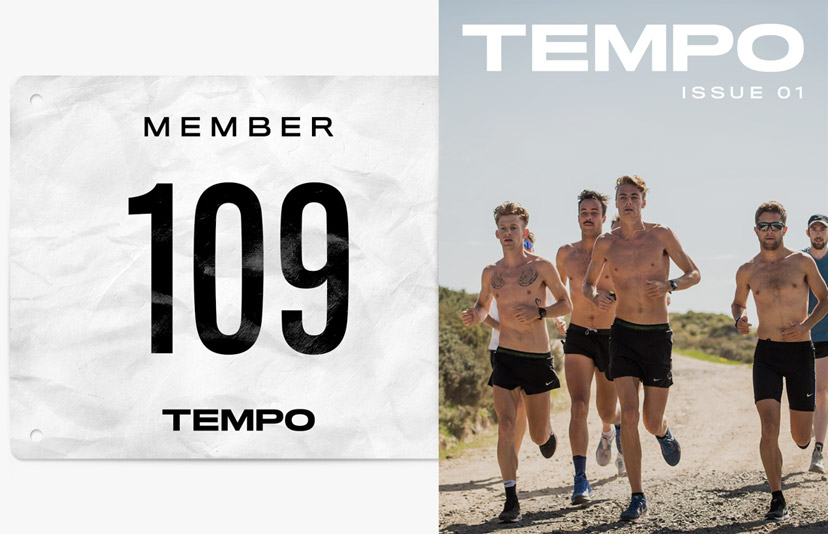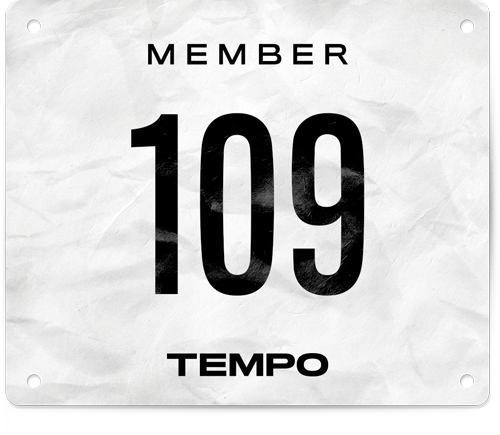Lifestyle
Last Call for Flagstaff
Exploring the reality of life in America's favourite running town
Another train rolls through Flagstaff, Arizona. Rumors of over 100 trains a day coming through this dusty, western town certainly exist. Confirmation of this factoid does not. Regardless of an exact number, a potentially viral tweet could read: “Death. Taxes. And being stopped by a train in Flagstaff.” The tracks running east to west, or west to east, depending on your directional prejudice, are the elder statesthings of the town. I completely accept into my life that a piece of steel can’t truly “see” anything but, in the same vein as the adage about walls talking, those rails have seen it all. Specifically, and to strike a chord with my primary audience, they have seen, been driven over, and been stepped on been by wave after wave of hungry runners.
I offer no specific timeline with relation to when the first wave of runners came upon Flagstaff but what I can offer is a simple truth: it’s different now. Flagstaff is no longer a romantic training venue where, as Dieter Baumann put it in the early 1990s, “you go to vanish.” The mythos of the isolated runner, pounding out triple digits each week, living in a cabin, having no running water, surviving on Velveeta is done. This certainly may have never been any runner’s reality in Flagstaff, but there was a time when it was easier to imagine.
Now, as your phone presents to you the latest batch of posts, Flagstaff appears more accessible than ever; a place where all you have to do is physically show up to reap the benefits of the high-altitude and never-ending soft surfaces. And yet, as the town grows up and is accepted as one of the premier training destinations in the world, a running community slowly slips from the pace.
Alicia Vargo laughs as she remembers the traditional weekly dinners hosted by the group of local runners a decade ago, “There would be ten pots of plain pasta that all the guys brought, and the few girls would have to cook everything else.” Vargo, neé Craig, was a two-time NCAA 10,000-meter champion but moved to Flagstaff with no intention of continuing her running career. After two weeks of hanging around town and immersing herself within the running community, she opted to call Flagstaff home.
“The reason I stayed, even when I wasn’t a runner, was because of the community,” she recalls. “These people were my family and I didn’t want to leave that. It’s so valuable.”
And while Vargo can easily reminisce on the once tight-knit community, it’s been harder to realize for her husband, Chris Vargo. The latter Vargo has only lived in Flagstaff for four years, but he’s quick to admit he may have been misled about the running community Flagstaff boasts. “You see these photos of 90-plus people on the weekly long run, but almost all of those people are from out of town.”
A lot of Flagstaff’s niche reputation now comes from those sort of photos seen on social media. Photos of local and visiting pros sharing in post-run, sun-kissed bliss, video footage of athletes storming another tempo session on Lake Mary Road, real-time updates of a first meal at Diablo Burger. Sharing these experiences through the cosmos via wave and wire creates a sense of connectedness while also indulging our own impulses to become part of the phenomenon to share, like, and post.
Vince Sherry and Mike Smith showed up to Flagstaff over ten years ago only ten days apart from one another. Both collegiate runners, but moving to Flagstaff for completely different reasons. Sherry had tried his hand at professional running, decided his time in the sport was over, and moved with his girlfriend (now wife) out to Flagstaff. Smith had just finished his graduate degree and made the decision to move to Flagstaff to train with a professional coach. Along with Vargo, they began contributing to the close-knit community.
“People’s community is now social media,” says Smith. “We used to have these big group dinners…” His voice trails off in a similar what-the-fuck-did-we-lose sort of way as Vargo’s had. Sherry remembers how this group of people eventually got him back into the sport, but more importantly, he remembers how critical it was to have a bedrock of solid people in his corner.
“It was so hard back then (training in Flagstaff) that if you didn’t help each other out, you were fucked.”
Sherry wasn’t trying to make Olympic teams, he wasn’t even trying to better his impressive personal bests, but he was there. There is what mattered.
To run is to create isolation. It’s a continued practice of isolating pain, fatigue, and any other variable you care to conjure up. You try to isolate other runners, drawing them out of their comfort zone. It’s where the separation between mind and body is possible. Isolation is the gift.
And while running is such a desolate, lonely endeavor, it cannot exist in a complete vacuum. Sometimes being able to enter a truly isolated state is only possible because when you come back to life, there is a giant pot of plain pasta waiting for you.
I listen to Sherry and Smith banter in Smith’s backyard on the past, never falling into bitterness but more an appreciation they were lucky enough to experience Flagstaff when they did. They laugh about “stacking mattresses,” which won’t ever be defined in any dictionary, but is the practice of hoarding mattresses in your garage and passing them out when a vagabond runner rolled through town.
“The nature of true community has changed,” Smith says. “Now, as long as someone likes your latest post, you’re friends. But those people don’t have to be there for you and show up for you. These communities are made up of people you don’t even know.”
Caleb Schiff’s sinewy legs brush by me as I watch him prep his kitchen for an evening of dinner service. His Garmin becomes caked with flour and dough as he works through the shaping of several loaves of bread. I ask where he learned to cook, his boyish smile shines as he responds with a laugh, “YouTube and books, I guess.”
Schiff arrived to town at the same time as Smith, Sherry, and Vargo. He brought his love of trail running discovered in Boulder to Flagstaff, and it wasn’t long before he was lining up at local races.
“Running is the one thing that’s held constant over the years,” he tells me before launching into a tumultuous story of how he ended up opening his restaurant, Pizzicletta.
It was only a few years into his Flagstaff tenure, and after a series of disruptive life events, he decided he was going to ditch his professor gig at Northern Arizona University and pursue a life of pizza. Schiff told his running buddies about his two-pronged plan for business doom: start up a pizzeria that will be across the street from the most popular pizzeria in town. Smith grows somber as he remembers trying to tell Schiff it was definitely a terrible idea.
“Ok, so you’re telling me you’re going to start a restaurant - already a hard thing to do - across the street from a Flagstaff pizza institution?” It was a moonshot. But if anyone is going to call you crazy, it better be the people you’ve been feeding your homemade pizza to in your backyard for years. With the backing of his community, Schiff and Pizzicletta have flourished into a Flagstaff institution of their own making.
“This place definitely makes me dig,” Schiff bluntly puts it. He manages to balance running his restaurant with 100-mile weeks out on the trails, so dig he must. Isolating himself in those moments “keeps him sane” but once he’s back from his trips up and down Mt. Elden, he has a completely real, tangible, deeply-rooted community waiting for him.
These authentic connections are becoming more rare as our interactions enter into a state of vapidity. Double-tapping is quickly threatening to transcend the virtual barrier. Building this online community is a house of cards, waiting to fold when it starts getting tough.
“When it starts getting hard in a 5K, Instragram ain’t helping you,” riffs Sherry. “The ability to go into yourself in those moments seems to be fading.”
To run is to create isolation. It’s a continued practice of isolating pain, fatigue, and any other variable you care to conjure up.
You try to isolate other runners, drawing them out of their comfort zone. It’s where the separation between mind and body is possible.
Isolation is the gift.
Stephen Kersh
As we gain more and more dependent on our online communities, we are directly jeopardizing authentic human connection. To be able to rely on people when it starts getting hard, to know someone will show up for you on your worst day, is the backbone of a relationship. It’s easy to congratulate someone with a clever quip and emoji, or send condolences in the comment section to show the world you too care for this avatar, but when interaction requires effort is where the separation begins.
“Authentic connection means showing up for someone,” Smith says, “These life experiences are way better if we are in this together.”
Each of these members of the old guard are still firmly rooted in the community of Flagstaff. Smith is the Director of Cross Country and Track and Field at Northern Arizona University, and also contributes significant time to the community running club Team Run Flagstaff. Sherry owns and operates the local running shop, Run Flagstaff, while timing and directing several races in town. Vargo has recently started a women’s trail running group that meets for weekly runs. Schiff has the most important job: he nourishes all of these people. And while they have all moved towards supporting an even larger framework of people, they are comfortable passing the torch to a fresh batch of runners.
It’s easy to congratulate someone with a clever quip and emoji, or send condolences in the comment section to show the world you too care for this avatar, but when interaction requires effort is where the separation begins.
“Authentic connection means showing up for someone,” Smith says, “These life experiences are way better if we are in this together.”
We seem to be entrenched within a moment where showing up on someone’s radar is far more important than showing up for them in real life. As more and more flock to Flagstaff, our community is becoming less willing to create a new framework and more apt to tilt our heads downwards, sink into our screen, and foster a reluctance to connect. But as far as we manage to slip from reality, the intrinsic human desire to be part of something bigger than one’s self remains. There may be more distraction now, more pixels to wade through, but all that’s needed is a deliberate choice.
The tracks shake, bracing for an oncoming train.


